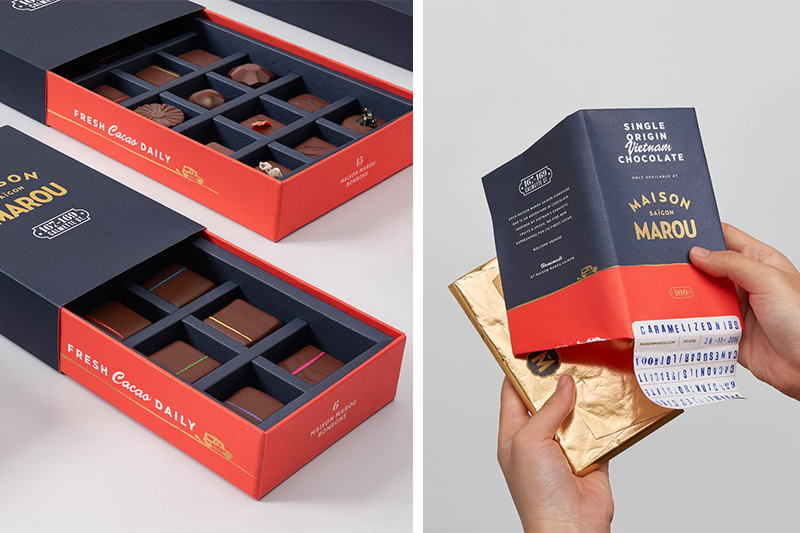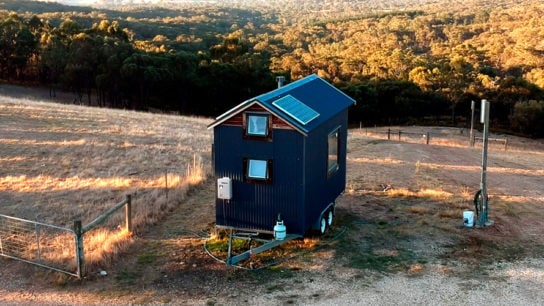Chi-An De Leo, co-founder of Saigon’s internationally acclaimed branding & creative agency Rice Creative, talks authenticity, creativity, and the story behind the world’s best chocolate.
Saigon-based Rice Creative is one of Asia’s branding & creative powerhouses, situated just steps away from the Hive District 1. Whether you’re Uber wanting to break into Vietnam, Coca Cola requiring a local take on your visual identity, Wallpaper* Magazine, Fred Perry, a Parisian teahouse, or Vietnamese chocolate brand Marou, purveyor of the world’s most beautifully-packaged bars, you turn to Rice for all things creative. The recipient of dozens of international awards, Rice has been featured in MONOCLE and Taschen to name a few. We sat down with co-founder Chi-An De Leo to talk about how he does it – and how he sees Saigon’s creative landscape.

De Leo credits a life lived unbound by borders with his ability to see things through a multifaceted lens. “My first language was Mandarin. Then I moved from Taiwan to Vietnam, learned Vietnamese and forgot my Chinese, then I was learning French while trying to keep my English,” he remembers. And all of that happened before the age of eight. Born in Germany to Vietnamese-French and Italian parents, De Leo “made a point not to be that international kid.” Authenticity is at the heart of everything he does.
“In 1999 I moved from a liberal French school in Hanoi to a very strict boarding school in England,” he recalls. “I rebelled as a kid; I had to.” After 10 years studying and living in England, De Leo moved back to Vietnam and founded Rice Creative with Joshua Breidenbach. And rebel they did. A collective of Promethean pioneers, Rice Creative is ambitious and agenda setting, their work is often seen as vibrant, authentic and emotionally expressive. When Wallpaper* Thai edition asked them to create a Vietnam-themed cover for the magazine, the pair reimagined traditional Vietnamese symbols as the city’s ubiquitous neon lights. Not content with concocting the image, they worked with the craftsmen to build the actual signs, their own neon metropolis, before shooting it. It is this sort of attention to detail that has earned Rice Creative the reputation as one of the most talented brand storytellers in their region.

Since its inception in 2011, Rice Creative has emerged as the first branding agency in Vietnam with a brand in and of itself. De Leo attributes that to the diligence they invest in each project. “When a client comes to us with a brief, we’ll rework the brief with them. We try to poke holes at it to make sure it’s solid. We want to see the challenges ahead and rework them with creative thinking and design, ” he describes of the process. The agonizing effort behind each project is the exact opposite of what’s “scalable” today, which is why the connections between the team and their clients are of mutual admiration, just as a maker treasures another’s craft. He considers it a privilege to get to know each brand’s story in a deeply intimate way: “Marou Chocolate was our first client. We started working together before there was Marou and before there was Rice. Along the way we became experts in chocolate too, where it comes from, how it’s made, how each bar is specific to a region like wine. We really needed to understand the industry in order to give body to the brand DNA. That has become the standard process for any client who comes to us, we become experts as they are.”

The accolades received by Rice Creative have helped put Vietnam’s creative scene on the map. “When people think about Vietnam, especially in the West, first they think about the food. Second, travel. Third, ‘Wasn’t there a war there?’ Lots of people, when they think about Vietnam, they don’t think about quality or design yet. We’re trying to change that. People can now pick up a Marou bar in London or New York and see that Vietnam has really good products and design,” he adds.
“We don’t fabricate the story, we just pull from what exists and articulate it to the world. Seeking the unexpected helps us shape the tone for the brand,” De Leo explains of the process of researching, interviewing people and understanding their journeys. “We’re quite lucky that people come to us a lot, but one project that we actively seek is the Ho Chi Minh City Metro line, we’d be honored to rebrand that. In the future, we would like to work on more cultural projects and give back to Vietnam more,” he adds. Creating good has always been at the core of the group. UNICEF ZERO Awards 2013, a pro bono project of Rice Creative’s, helped UNICEF Vietnam raise almost USD 500,000, four times that of any previous fundraiser, providing treatment for 50,000 children.

Oversubscribed by international clients, Rice Creative has future plans to expand to Europe or the US but is content in Saigon for now. “What excites me is the buzz that’s happening in Saigon. The energy here and the creative pockets of people trying new things,” De Leo explains of his adopted city’s gravitational pull. Matt Gross from the New York Time puts it best: “Like New York, Ho Chi Minh City exists not for tourists but for its own lively populace; this metropolis doesn’t care about coddling outsiders — it’s too busy entertaining itself.”
De Leo sees the young generation as the driving force of the city: “Vietnam can now find its own identity. There’s lot of pride and resilience here. The country has a long history of colonisation and restriction. Now that’s completely changed. For the new generation, Vietnam is more a land of possibilities than America is. Even if you fail, it’s okay, because you haven’t really lost that much. You cannot do that in the West anymore. The risk here is close to none. That’s why the essence of Saigon is opportunity. You can do anything, and that’s exciting.”
Related Articles
Our Guide to Asia’s Best Fluffy Soufflé Pancakes
The 4 Best Superfoods That Will Boost Your Health
Cricket Protein Could Be the Next Food Innovation. Here’s How.




